soviet
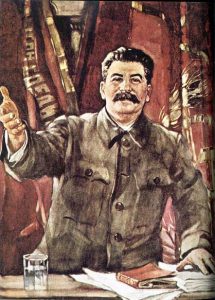
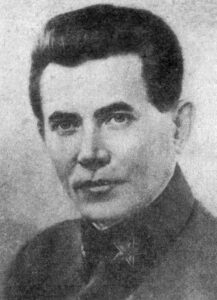 I suppose that turning on any government could be viewed at treason, but some governments are so evil and so corrupt that the citizens have no choice but to take them down, and as in the case of the Soviet regime, even the members of the government themselves could be viewed as treasonous and subject to removal. The big difference with the Soviet regime was that when the government officials were being removed, they were also being killed. The event was called The Great Purge, and as the name implies, the idea was to remove, in this case permanently, anyone who disagreed with Stalin and his way of running the regime. It was also called The Great Terror and Ezhovshchina (after the People’s Commissar of Internal Affairs, Nikolai Ezhov, who oversaw the process before he himself became one of its casualties). No one was safe from the long arm of Stalin.
I suppose that turning on any government could be viewed at treason, but some governments are so evil and so corrupt that the citizens have no choice but to take them down, and as in the case of the Soviet regime, even the members of the government themselves could be viewed as treasonous and subject to removal. The big difference with the Soviet regime was that when the government officials were being removed, they were also being killed. The event was called The Great Purge, and as the name implies, the idea was to remove, in this case permanently, anyone who disagreed with Stalin and his way of running the regime. It was also called The Great Terror and Ezhovshchina (after the People’s Commissar of Internal Affairs, Nikolai Ezhov, who oversaw the process before he himself became one of its casualties). No one was safe from the long arm of Stalin.
The Great Purge, the state-organized bloodshed…slaughter really, that overwhelmed the Communist Party and Soviet society took place from 1936 to 1938. The real reasons for these heinous attacks on government officials within the Soviet regime remain largely unknown, but it’s easy to imagine that Stalin irrationally felt like his men were trying to take over the operation, or run from it, and so they had to be removed. Of course, they said it was in response to terror attacks or threatened terror attacks, but to think anyone believed that is more insane than the act itself.
Of course, Stalin had to do things “right,” so he held three elaborately staged show trials of former high-ranking Communists. In July-August 1936, in the first show trial, Lev Kamenev, Grigorii Zinoviev, and fourteen others were convicted of having organized a Trotskyite-Zinovievite terrorist center that allegedly had been formed in 1932. In the end, they were found guilty of the assassination of Sergei Kirov in December 1934. This first trial did little to satisfy Stalin, not did the efforts of the police to investigate and liquidate such “nefarious plots.” So, Stalin replaced Genrikh Iagoda with Nikolai Ezhov as head of the NKVD in September 1936. In January 1937, a second show trial was held, with Iurii Piatakov and other leading figures in the industrialization drive as the chief defendants. At a mandatory session of the party’s Central Committee in February-March 1937, Nikolai Bukharin and Aleksei Rykov, who were the most prominent party members associated with the so-called Rightist deviation of the late 1920s and early 1930s, were accused of having collaborated with the Trotskyite-Zinovievite terrorists as well as with foreign intelligence agencies. In March 1938, in the third show trial, they along with Iagoda and others were tried, convicted, and sentenced to death.
The period of time between the second and third show trials saw the upper echelon of the Red Army, provincial party secretaries, party and state personnel among the national minorities, industrial managers, and other officials destroyed by arrests and summary executions. As the “process” of torture, threats, and executions continued, it fed upon itself. The accused under severe physical and psychological pressure from their interrogators, named names and confessed to outlandish crimes…all probably fake and forced. Millions of others, terrified of being accused themselves, became involved in the frenzied search for “enemies of the people.” On July 3, 1937, the Politbiuro ordered Ezhov to conduct “mass operations” to locate and arrest recidivist criminals, ex-kulaks, and other “anti-Soviet elements,” all of whom were prosecuted by three-person 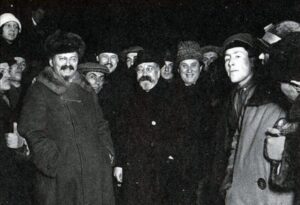 tribunals. Ezhov actually established quotas in each district for the number of arrests, meaning that more arrests were made for trumped-up charges. Ezhov’s projected totals of 177,500 exiled and 72,950 executed were eventually exceeded in what was an absolute witch hunt.
tribunals. Ezhov actually established quotas in each district for the number of arrests, meaning that more arrests were made for trumped-up charges. Ezhov’s projected totals of 177,500 exiled and 72,950 executed were eventually exceeded in what was an absolute witch hunt.
The repercussions of this horrific time in history are unknown. The situation, that began as a bloody retribution against what was already a defeated political opposition, soon developed into a its own class of disease within the political body. Its psychological consequences among the survivors were long-lasting and incalculable…mostly fear of dying and fear of anyone in authority.
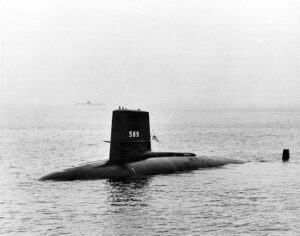
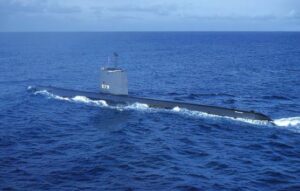 USS Scorpion (SSN-589) was a Skipjack-class nuclear-powered submarine that served in the United States Navy, and the sixth vessel, and second submarine, of the US Navy to carry that name. It was also the fourth nuclear powered submarine to mysteriously go missing in 1968. Scorpion was lost with all its crew, on May 22, 1968. Scorpion is one of two nuclear submarines the US Navy has lost, the other being USS Thresher. The other nuclear-powered submarines to go missing in 1968 at the height of the Cold War were Israeli submarine INS Dakar, the French submarine Minerve, and the Soviet submarine K-129. At the time Scorpion went missing when she was sent to surveil the Soviet submarine K-129, which had apparently already gone missing earlier in the year. The wreckage of USS Scorpion is still at the bottom of the North Atlantic Ocean…with all its armaments and nuclear engine.
USS Scorpion (SSN-589) was a Skipjack-class nuclear-powered submarine that served in the United States Navy, and the sixth vessel, and second submarine, of the US Navy to carry that name. It was also the fourth nuclear powered submarine to mysteriously go missing in 1968. Scorpion was lost with all its crew, on May 22, 1968. Scorpion is one of two nuclear submarines the US Navy has lost, the other being USS Thresher. The other nuclear-powered submarines to go missing in 1968 at the height of the Cold War were Israeli submarine INS Dakar, the French submarine Minerve, and the Soviet submarine K-129. At the time Scorpion went missing when she was sent to surveil the Soviet submarine K-129, which had apparently already gone missing earlier in the year. The wreckage of USS Scorpion is still at the bottom of the North Atlantic Ocean…with all its armaments and nuclear engine.
The Cold War is a term commonly used to refer to a period of geopolitical tension between the United States and the Soviet Union and their respective allies, the Western Bloc and the Eastern Bloc. The first phase of the Cold War began shortly after the end of World War II in 1945. The United States and its allies created the NATO military alliance in 1949 in the apprehension of a Soviet attack and termed their global policy against Soviet influence containment.
Following World War II, tensions were running high between world powers. It is thought that if there was ever a time when a real possibility of a nuclear attack existed, it was during the Cold War. This meant that countries were frantically looking for any advantage they could use to take over their competitors. One way to watch the other countries was to Surveil beneath the waves where they could be more hidden. This surveillance included the use of submarine crews. That, of course, explains the reason for mysterious disappearance of four subs from four different countries virtually at the same time.
The first disappearance was the INS Dakar from Israel, which went down just east of Crete on January 25, 1968. Dakar’s wreckage was found in 1991, but no official cause for the sinking was determined. Next, The French sub Minerve disappeared about an hour outside of Toulon on January 27, 1968. That wreckage was found in 2019, and it showed the hull had separated into three sections. When the French government made the decision to leave the wreck, any chance of answers was eliminated. The Soviet K-129 disappeared earlier in the year, so maybe USS Scorpion was looking for it. Nevertheless, on May 22, 1968, the disappearance conspiracy of 1968 was brought to a close, when USS Scorpion. The submarine would not be fount until October of 1968. The Navy looked into the disaster, but in the end the official court of inquiry said the cause of the loss could not be determined with certainty. Still, there are several theories on what might have happened. One centered around a malfunction of a torpedo. Others suspected poor maintenance may have been the culprit, citing the rushed overhaul.
That was the last report anyone heard about the submarine. After decades of research and investigation, the US Navy has never changed its report that a catastrophic event caused the sinking. Nevertheless, there are those who believe the Scorpion was taken out by the Soviets in retaliation for perceived attack on the K-129 
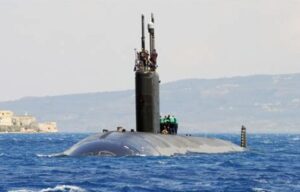 submarine earlier in the year. Neither country will admit or deny any direct action relating to the submarine sabotage, but something happened during the first half of 1968. Four nuclear-powered submarines, from four different countries just don’t start sinking for no reason, and yet, no reason was ever determined. They just sunk.
submarine earlier in the year. Neither country will admit or deny any direct action relating to the submarine sabotage, but something happened during the first half of 1968. Four nuclear-powered submarines, from four different countries just don’t start sinking for no reason, and yet, no reason was ever determined. They just sunk.
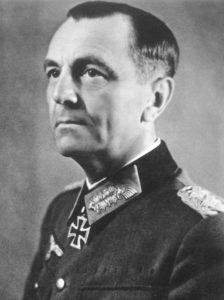
 As the Third Reich was losing its war against the world, German General Friedrich Paulus, who was commander in chief of the German 6th Army at Stalingrad, urgently requests permission from Adolf Hitler to surrender his position there. Paulus knew they had no chance, but Hitler refused. Of course, we all know that Hitler was insane. He would make his men fight to the death when there was no hope of winning the battle.
As the Third Reich was losing its war against the world, German General Friedrich Paulus, who was commander in chief of the German 6th Army at Stalingrad, urgently requests permission from Adolf Hitler to surrender his position there. Paulus knew they had no chance, but Hitler refused. Of course, we all know that Hitler was insane. He would make his men fight to the death when there was no hope of winning the battle.
Stalingrad was a prized strategic area, and the battle to take the city began in the summer of 1942. German forces assaulted the city, which was a major industrial center, but they had misjudged the Soviets. Despite repeated attempts and having pushed the Soviets almost to the Volga River in mid-October, as well as encircling Stalingrad, the 6th Army, under Paulus, and part of the 4th Panzer Army could not break past the adamantine defense of the Soviet 62nd Army. As their resources diminished. The Germans suffered diminishing resources, partisan guerilla attacks, and the cruelty of the Russian winter, all of which began to take their toll on the Germans. The Soviets made their move on November 19, launching a counteroffensive that began with a massive artillery bombardment of the German position. The assault began when the Soviets attacked the weakest link in the German force-inexperienced Romanian troops. Soviet soldiers took 65,000 soldiers prisoner that day. Then, the Soviets in a bold strategic move, encircled the enemy and launched pincer movements from north and south simultaneously, just as the Germans were encircling Stalingrad. It was at this point that the Germans should have withdrawn, and Paulus requested permission to withdraw, but Hitler wouldn’t allow it. He told his armies to hold out until they could be reinforced. Fresh troops would not arrive until December, and by then it was too late. The Soviet position was too strong, and the Germans were exhausted. They were out of options.
By January 24, the Soviets had overrun Paulus’ last airfield. His position was indefensible and surrender was the only hope for survival. Paulus urgently requested, “Let us surrender!!” Still, Hitler wouldn’t hear of it: “The 6th Army will hold its positions to the last man and the last round.” Paulus held out until January 31, when he finally surrendered. Of more than 280,000 men under Paulus’ command, half were already dead or dying, 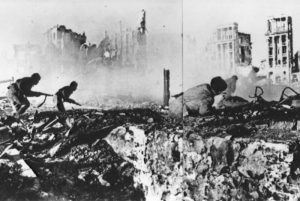
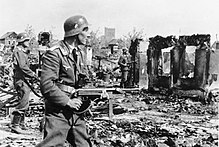 about 35,000 had been evacuated from the front, and the remaining 91,000 were hauled off to Soviet POW camps. Paulus eventually sold out to the Soviets altogether, joining the National Committee for Free Germany and urging German troops to surrender. Testifying at Nuremberg for the Soviets, he was released and spent the rest of his life in East Germany. Hitler was crazy, and his officers knew it, but there was little they could do about it.
about 35,000 had been evacuated from the front, and the remaining 91,000 were hauled off to Soviet POW camps. Paulus eventually sold out to the Soviets altogether, joining the National Committee for Free Germany and urging German troops to surrender. Testifying at Nuremberg for the Soviets, he was released and spent the rest of his life in East Germany. Hitler was crazy, and his officers knew it, but there was little they could do about it.
 In the Soviet Union’s Catherine Palace, located near Saint Petersburg, is rumored to have been a beautiful chamber decorated in amber panels backed with gold leaf and mirrors. The elaborately designed hall was a gift to Peter the Great from Germany. Constructed in the 18th century in Prussia, the room was dismantled and eventually disappeared during World War II. In the days before World War II started, Hitler had worked an “alliance agreement” with Stalin. Hitler really had no intention of keeping the agreement, but rather wanted to take control of Poland without Soviet interference. That didn’t make the Soviet Union safe either. When Germany made their move, the Soviets did not have enough time to prepare.
In the Soviet Union’s Catherine Palace, located near Saint Petersburg, is rumored to have been a beautiful chamber decorated in amber panels backed with gold leaf and mirrors. The elaborately designed hall was a gift to Peter the Great from Germany. Constructed in the 18th century in Prussia, the room was dismantled and eventually disappeared during World War II. In the days before World War II started, Hitler had worked an “alliance agreement” with Stalin. Hitler really had no intention of keeping the agreement, but rather wanted to take control of Poland without Soviet interference. That didn’t make the Soviet Union safe either. When Germany made their move, the Soviets did not have enough time to prepare.
It was 1941, when the Germans advanced. The job of removing the panels to safety would take time…time they didn’t have. The panels were quickly taken by the Germans and transported to Konigsberg, East Prussia. They were confiscating anything of value. Initially, the Amber Room was placed on public display at the Konigsberg Castle, but was hidden in anticipation of the 1945 Soviet advance. Before its loss, it was considered an “Eighth Wonder of the World.”
In 1701, the Amber Room was intended for the Charlottenburg Palace, in Berlin, Prussia, but was eventually installed at the Berlin City Palace. Designed by German baroque sculptor Andreas Schlüter and Danish amber craftsman Gottfried Wolfram, who worked on the room until 1707, at which time the work was continued by amber masters Gottfried Turau and Ernst Schacht from Danzig (Gdansk). The masterpiece remained in Berlin until 1716, when it was given by the Prussian King Frederick William I to his ally Tsar Peter the Great of the Russian Empire. In Russia, the beautiful room was installed in the Catherine Palace. In the castle, the room was further expanded and several renovations where performed, making it an even more stunning chamber than it had been before. In the end, it covered more than 590 square feet and contained over 13,000 pounds of amber.
When the Army Group North of Nazi Germany took possession of the Amber Room during World War II, it was taken to Königsberg for reconstruction and display. Like many stolen treasures, the Germans hid the Amber Rooms panels, and its eventual fate and current whereabouts, if it has survived, remain a mystery. While most  experts believed it was obliterated during the intense shelling that destroyed the Konigsberg Castle, I don’t believe that is true, because surely some evidence of that much amber would have been found after a bombing, but none was ever found at the site.
experts believed it was obliterated during the intense shelling that destroyed the Konigsberg Castle, I don’t believe that is true, because surely some evidence of that much amber would have been found after a bombing, but none was ever found at the site.
Persistent rumors about the current location of the Amber Room have never panned out, and after years of searching, it was decided in 1979, to create a reconstructed Amber Room at the Catherine Palace. After decades of work by Russian craftsmen and donations from Germany, the reconstructed Amber Room was finally inaugurated in 2003.
 With the arrival of the 50th anniversary of the landing on the moon, on July 20, 2019, many people have been reviewing old footage and books about the event. I came across a book that caught my eye on Audible. The book, The Man Who Knew The Way To The Moon, by Todd Zwillich wasn’t exactly about the moon landing, but rather how it became possible. The book begins with Russia beating the United States to the punch when they sent a man Yuri Alekseyevich Gagarin, into space on April 12, 1961. As short as the flight was…just 89 minutes…it was still an embarrassment to the United States who felt they should have been first.
With the arrival of the 50th anniversary of the landing on the moon, on July 20, 2019, many people have been reviewing old footage and books about the event. I came across a book that caught my eye on Audible. The book, The Man Who Knew The Way To The Moon, by Todd Zwillich wasn’t exactly about the moon landing, but rather how it became possible. The book begins with Russia beating the United States to the punch when they sent a man Yuri Alekseyevich Gagarin, into space on April 12, 1961. As short as the flight was…just 89 minutes…it was still an embarrassment to the United States who felt they should have been first.
In answer to the Soviet space flight, President Kennedy challenged NASA to put a man on the moon before the end of the decade. NASA sort of panicked. Yes, they had been thinking about a moon landing…and some remote point down the road, but they were nowhere near ready to go them by the end of the decade. Nevertheless, they began to explore ideas to make it happen. One of those people who had been considering a way to make the landing possible. By this time, no one doubted the ability to go into space, and to safely return to earth. Landing on the moon was a different story.
The widely accepted method of landing on the moon was to have the original rocket back onto the moon, carrying enough fuel to take off again and return to Earth. A man named John Houbolt thought that was…well, simply impossible. Now, I’m no aeronautical engineer, like Houbolt was, and maybe I have the advantage of  knowing about the past space exploration victories, but when I think about three astronauts backing a 90 foot high, fully fueled rocket onto the moon…all I can say is, “That’s ludicrous!!” People often say that an idea doesn’t take a rocket scientist, and it this case, maybe it shouldn’t be a rocket scientist, but rather an aeronautical engineer.
knowing about the past space exploration victories, but when I think about three astronauts backing a 90 foot high, fully fueled rocket onto the moon…all I can say is, “That’s ludicrous!!” People often say that an idea doesn’t take a rocket scientist, and it this case, maybe it shouldn’t be a rocket scientist, but rather an aeronautical engineer.
John Houbolt, kept saying and trying to be heard, that it wouldn’t work, but he had a plan that would…Lunar Orbit Rendezvous or LOR. In Houbolt’s design, a smaller lunar module would land on the moon while the command module waited above. Then the Lunar module would take of and dock with the command module for the trip back to Earth. It is the way we know did work, because we have the advantage of time, but the scientists and engineers at NASA would not listen. One man, Max Faget, an immigrant from British Honduras, who designed the Mercury module, actually stood up at a meeting where Houbolt was presenting his idea, and yelled at the group, saying, “His figures lie! He doesn’t know what he’s talking about!” Houbolt was horribly humiliated, and he never forgot the incident. He didn’t let it stop him either. In the end, as Faget spent many hours trying desperately to make his own figures work, so  that a rocket could back onto the moon, he finally had to admit defeat. He called John Houbolt, and conceded the lunar landing design to Houbolt’s design, which was, as we all know, completely successful, because after all, his figures did not lie, and he did know what he was talking about. It was a great moment in history, and in Houbolt’s life, except for the fact that no one knew that the successful landing was his design. While the Lunar landing, 50 years ago was an amazing accomplishment, I find it quite sad that it took so many years for the world to know about how one man’s refusal to give up, actually made Lunar landing possible. We owe John Houbolt a great debt of gratitude, and it is more than 50 years overdue. Now that’s ludicrous!!
that a rocket could back onto the moon, he finally had to admit defeat. He called John Houbolt, and conceded the lunar landing design to Houbolt’s design, which was, as we all know, completely successful, because after all, his figures did not lie, and he did know what he was talking about. It was a great moment in history, and in Houbolt’s life, except for the fact that no one knew that the successful landing was his design. While the Lunar landing, 50 years ago was an amazing accomplishment, I find it quite sad that it took so many years for the world to know about how one man’s refusal to give up, actually made Lunar landing possible. We owe John Houbolt a great debt of gratitude, and it is more than 50 years overdue. Now that’s ludicrous!!
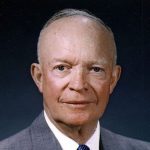
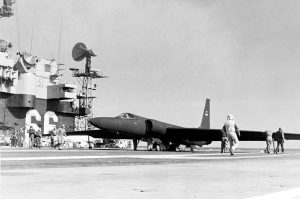 Americans don’t really like to think that our military is out spying on other countries, but like it or not, we spy on them, and they spy on us. We know it and they know it. So, spying is not really the problem…it’s getting caught that causes a problem. Getting caught is the ultimate faux pas, and that is what happened on May 1, 1960, when an American U-2 spy plane was shot down over the Soviet Union while conducting espionage. The plane was being operated by Central Intelligence Agency pilot Francis Powers, under the order of the CIA. The U-2 spy plane was the brainchild of the CIA, and it was in all reality, a sophisticated technological marvel. It could travel at altitudes of up to 70,000 feet, and it was equipped with state-of-the-art photography equipment that could, according to the CIA, take “high-resolution pictures of headlines in Russian newspapers as it flew overhead.” The flights over the Soviet Union began in mid-1956, and the CIA assured President Eisenhower that the Soviets did not possess anti-aircraft weapons sophisticated enough to shoot down the high-altitude planes. How wrong they were.
Americans don’t really like to think that our military is out spying on other countries, but like it or not, we spy on them, and they spy on us. We know it and they know it. So, spying is not really the problem…it’s getting caught that causes a problem. Getting caught is the ultimate faux pas, and that is what happened on May 1, 1960, when an American U-2 spy plane was shot down over the Soviet Union while conducting espionage. The plane was being operated by Central Intelligence Agency pilot Francis Powers, under the order of the CIA. The U-2 spy plane was the brainchild of the CIA, and it was in all reality, a sophisticated technological marvel. It could travel at altitudes of up to 70,000 feet, and it was equipped with state-of-the-art photography equipment that could, according to the CIA, take “high-resolution pictures of headlines in Russian newspapers as it flew overhead.” The flights over the Soviet Union began in mid-1956, and the CIA assured President Eisenhower that the Soviets did not possess anti-aircraft weapons sophisticated enough to shoot down the high-altitude planes. How wrong they were.
 On May 1, 1960, over Russia, a U-2 flight piloted by Francis Gary Powers disappeared, while doing reconnaissance. The CIA reassured the president that, even if the plane had been shot down, it was equipped with self-destruct mechanisms that would render any wreckage unrecognizable and the pilot was instructed to kill himself in such a situation. Looking at the wreckage, I suppose it was unrecognizable…to a degree, at least in the picture, but how can a pilot be ordered to kill himself. I don’t know about you, but I would have to disobey that order. Apparently Powers felt the same way, because he parachuted out, rather than crash with the plane. Still, based on this information, the United States government issued a statement indicating that a weather plane had veered off course and supposedly crashed somewhere in the Soviet Union. Khrushchev took great pleasure in embarrassing the United States when he produced not only the mostly-intact wreckage of the U-2, but also the captured pilot…very much alive.
On May 1, 1960, over Russia, a U-2 flight piloted by Francis Gary Powers disappeared, while doing reconnaissance. The CIA reassured the president that, even if the plane had been shot down, it was equipped with self-destruct mechanisms that would render any wreckage unrecognizable and the pilot was instructed to kill himself in such a situation. Looking at the wreckage, I suppose it was unrecognizable…to a degree, at least in the picture, but how can a pilot be ordered to kill himself. I don’t know about you, but I would have to disobey that order. Apparently Powers felt the same way, because he parachuted out, rather than crash with the plane. Still, based on this information, the United States government issued a statement indicating that a weather plane had veered off course and supposedly crashed somewhere in the Soviet Union. Khrushchev took great pleasure in embarrassing the United States when he produced not only the mostly-intact wreckage of the U-2, but also the captured pilot…very much alive.
It was at this point that President Eisenhower had to publicly admit that it was indeed a United States spy plane. On May 16, a major summit between the United States, the Soviet Union, Great Britain, and France 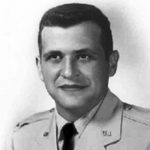
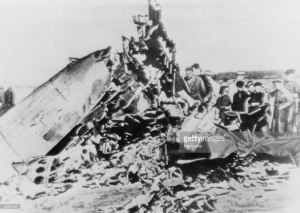 began in Paris. Issues to be discussed included the status of Berlin and nuclear arms control, but as the meeting opened, Khrushchev launched into a tirade against the United States and Eisenhower and then stormed out of the summit. The meeting collapsed immediately and the summit was called off. Eisenhower considered the “stupid U-2 mess” one of the worst debacles of his presidency. The summit was supposed to solve some things, but it ended up making matters much worse.
began in Paris. Issues to be discussed included the status of Berlin and nuclear arms control, but as the meeting opened, Khrushchev launched into a tirade against the United States and Eisenhower and then stormed out of the summit. The meeting collapsed immediately and the summit was called off. Eisenhower considered the “stupid U-2 mess” one of the worst debacles of his presidency. The summit was supposed to solve some things, but it ended up making matters much worse.

